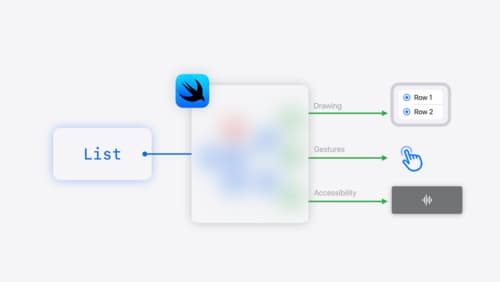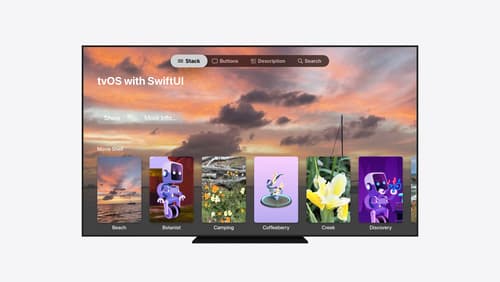How do I get started building a swiftUI app?
Asked on 2024-07-30
1 search
To get started building a SwiftUI app, you can follow these steps:
-
Launch Xcode: Open Xcode and create a new project. Choose the "App" template under the iOS section and make sure to select SwiftUI as the user interface.
-
Understand the Basics of Views: SwiftUI is built around the concept of views, which are the building blocks of your user interface. Views in SwiftUI are declarative, compositional, and state-driven. You describe what you want your UI to look like, and SwiftUI takes care of rendering it. For example, you can create a horizontal stack with a label, spacer, and text using simple declarative syntax.
-
Explore Built-in Capabilities: SwiftUI comes with a wide range of built-in components and capabilities that allow you to create rich, interactive, and native-feeling apps with less code. This includes navigation views, split views, customizable tables, and more.
-
Incremental Adoption: You can start using SwiftUI in parts of your existing app or build a new app entirely with SwiftUI. There is no need to convert your entire app to SwiftUI at once.
-
Learn from Tutorials and Documentation: Follow along with SwiftUI tutorials and explore the extensive documentation provided by Apple. These resources guide you through building different types of apps and help you understand the various features and capabilities of SwiftUI.
-
Utilize Other Frameworks: SwiftUI integrates seamlessly with other frameworks like Swift Data for persistent models and Swift Charts for creating information visualizations. These tools can help you build more complex and feature-rich apps.
For a detailed introduction and step-by-step guide, you can watch the session SwiftUI essentials from WWDC 2024.
Relevant Sessions
These sessions provide a comprehensive overview and deep dive into the capabilities and best practices for building apps with SwiftUI.

SwiftUI essentials
Join us on a tour of SwiftUI, Apple’s declarative user interface framework. Learn essential concepts for building apps in SwiftUI, like views, state variables, and layout. Discover the breadth of APIs for building fully featured experiences and crafting unique custom components. Whether you’re brand new to SwiftUI or an experienced developer, you’ll learn how to take advantage of what SwiftUI has to offer when building great apps.

Migrate your TVML app to SwiftUI
SwiftUI helps you build great apps on all Apple platforms and is the preferred toolkit for bringing your content into the living room with tvOS 18. Learn how to use SwiftUI to create familiar layouts and controls from TVMLKit, and get tips and best practices.

Platforms State of the Union
Discover the newest advancements on Apple platforms.
